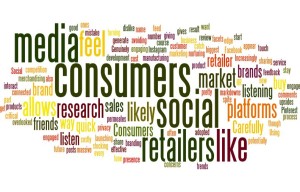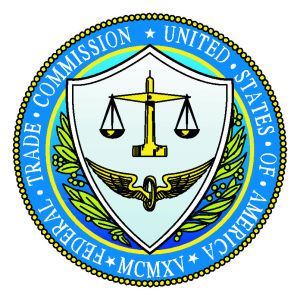Fleeting as social media exchanges may seem, they can have a pronounced impact on business and their influence can echo far beyond a simple post or retweet.
While the anonymous, public and often informal nature of Internet dialogue often leads corporations to relax their guard, it’s important to note: Managing a brand’s social media presence is a tricky balancing act. The key to being successful? Keeping things polite and professional, and constantly acknowledging your audience’s voice, while adding value or insight to customer exchanges.
Looking to enhance your corporate social media efforts? Here are
1. Thou shalt be patient and considerate.
While many campaigns seem to go viral overnight, it’s important to remember that businesses rarely experience instant breakthroughs or meteoric audience growth on social media. More important than chasing huge follower or subscriber counts is to consistently and meaningfully engage an audience by creating helpful and insightful content that addresses key concerns or speaks to consumer needs.
Over time, through constant two-way dialogue with users, this commitment will help your business build a loyal and involved following, the influence of which may far outstrip that of larger, less engaged audiences.
Be relevant, generous and sincere. While doing so may not seem as sexy or instantly gratifying as posting a viral video or infographic, it will help you build trust, empathy and, most importantly, relationships, the currency of the modern social realm.
2. Thou shalt not be indifferent to the voice of thy customer.
When you engage in social media, you commit to playing a role in very public customer conversations. This entails consistently having to acknowledge other parties’ opinions, and embracing both the good and the bad, including harsh or critical feedback.
Instead of looking the other way when someone posts something unflattering, take a moment to objectively assess the feedback. Constructive criticism not only presents opportunities to improve our efforts to serve end-users; it also presents a chance to engage in human exchanges, and apologize and appease the situation.
In other words, the goal is to create conversations, not critiques, and optimize the level of customer support and service provided to your audience. Sometimes, simply taking a moment to acknowledge others’ voices, or answer questions directly can bridge gaps that threaten to build a gulf between you and end-users.
3. Thou shalt be true to thyself.
You’ve spent ample time crafting your brand’s mission and values across your website, marketing materials and advertising efforts. Now is not the time to abandon the positive image you’ve worked so hard to cultivate, or forsake professionalism or propriety in the name of popularity.
Given the medium’s more personable nature, social media exchanges should certainly be more human than formal. But all should be respectful of customers, audience needs and the positive image you’ve worked so hard to cultivate. It’s important not only to respect followers’ time and intelligence, but also to be consistent with your branding and messaging across all platforms. That way, fans and followers know both who you are and the values that your business stands for.
4. Thou shalt think before you post.
Trade secret: Every post or status update you share should add value for your audience, regardless whether that value comes in the form of enlightenment, entertainment or an uplifting exchange.
Therefore, make every share unique, and think about how to ensure it counts – i.e., what can you add to the conversation that others can’t? As a simple example, retweeting posts of note is an excellent way to share information, but adding your own opinion or links to further resources is an even better use of time. Likewise, if you post every single little detail or update about your brand, industry and products, fans may become fatigued. Respect your audience and think about how to make posts superlative, singular and of notable worth before sharing.
The key question to ask yourself: What’s in it for them?
5. Thou shalt be brief.
Remember to keep it short and sweet on social media. You have only a few seconds to catch someone’s attention, and even less time to keep it. Therefore, make sure your posts have an immediate impact and utilize concise language, links, references or (better yet) visual assets, such as photos, videos and inforgraphics. These quickly convey key information at a glance.
Look for ways to distill an idea down to a single statement or elevator pitch that clearly and quickly communicates subject matter, tone and target audience, and provides further points of reference should audiences wish to dive deeper into the topic.
6. Thou shalt not hog the conversation.
In many ways, social networks serve as the world’s largest cocktail party. But no one wants to be stuck with a self-centered conversation hog.
The same rule applies to your social media presence, where it’s important to listen before speaking – doubly so, as the dynamics of conversation and rules of online behavior differ depending on context and parties in attendance. Dedicate the majority of your time proactively engaging your audience, then split the remaining time between content your audience will care about and promoting your brand.
7. Thou shalt do good.
Think of social media as the world’s largest megaphone or amplifier – it can project your online voice louder, farther and faster than ever before.
Always be engaging and upbeat (negativity never reflects well on the poster, especially online, where conversational subtlety and nuance are often lost in translation), and take advantage of the opportunities presented to promote positivity. Material you post online should be less promotional than beneficial in nature, designed to help viewers save time or money, enhance learning and awareness, or offer key opinions and insights. From securing support for charitable ventures to offering deeper looks at evolving trends to helping fans and followers make valuable connections, consistently look for ways to aid, assist and uplift your audience.
8. Thou shalt keep it strictly business.
While color and personality are always welcome online, business and pleasure seldom mix well in social media contexts – personal and corporate accounts are best kept separated. Remember: Users following business accounts do so because they identify with the brand, and expect content in keeping with its core image and focus. Posting anything outside of this realm may prompt confusion, surprise or indifference, and has the potential to reflect poorly on your brand.
Communications should universally be polite, professional and on-topic. Where the risk of misinterpretation or controversy exists, play it safe and skip posting. Keep your tone and voice upbeat and respectful – avoid complaints, negative comments and stabs at the competition at all costs.
9. Thou shalt respect the hashtag.
Twitter hashtags are great vehicles for highlighting topics of relevance, drawing audience’s attention and fostering fan engagement. However, they can also be dangerous when used incorrectly – i.e., too frequently or in inappropriate contexts.
Oftentimes, brands overuse hashtags or place them in unrelated posts to drive added visibility. But doing so may leave viewers feeling cheated, especially if those hashtags add no relevant context to conversations or potentially alienate readers. This can cause a negative reaction to your online voice and ultimately your business, which will not only hinder fan acquisition but potentially detract from your brand.
10. Thou shalt not lie.
Skip the temptation to embellish, fib or inflate the truth online, especially since it can easily backfire or even lead to potential legal repercussions. Likewise, be honest with your audience. If fans and followers have questions about an evolving scenario – e.g., a potential PR crisis -– sometimes, the best answer is simply a prompt: “Apologies, but we don’t know. However, rest assured we’re working on it, and will let you know as soon as possible.”
Trust is the foundation of any relationship – real or online, and its loss can have a marked impact on both your brand and customer perception. As Benjamin Franklin once pointed out, it takes many exchanges to build a positive reputation, but only one mistake to undo it.
See Article
 We have all seen them, use them or been annoyed by them when abused, something I call hashtag vomit. Users who don’t understand hashtags tagging their post with so many irrelevant and annoying hashtags you just want to move on without reading the post.
We have all seen them, use them or been annoyed by them when abused, something I call hashtag vomit. Users who don’t understand hashtags tagging their post with so many irrelevant and annoying hashtags you just want to move on without reading the post.








